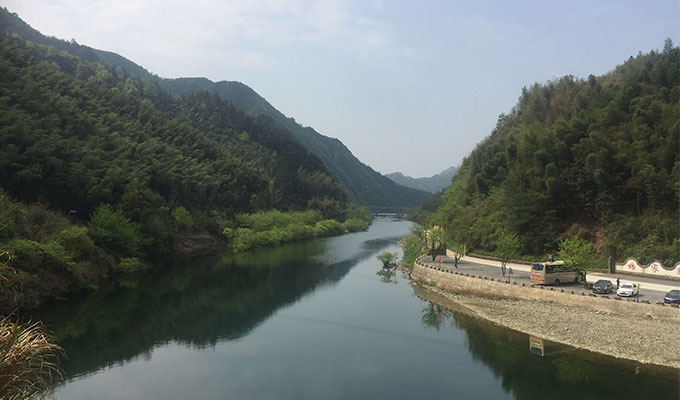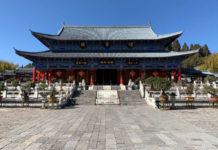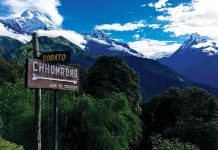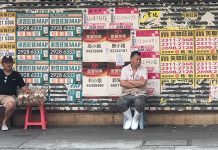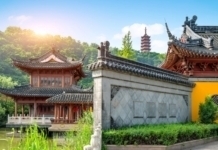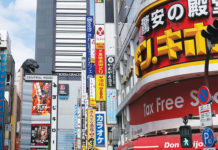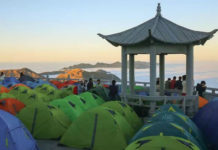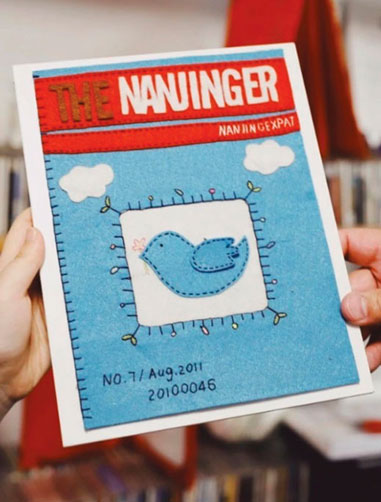The word “Taiping” is virtually a cliché. As a place name, this is the local equivalent of Springfield in the USA; no less than 47 towns in China go by the moniker. Then the name pops up in Taiping Insurance, Haerbin Taiping International Airport, the Taiping Ocean; the Pacific as it is known in Chinese, and of course the Nanjing-initiated Taiping Rebellion (1850-1864).
Tops, however, for The Nanjinger now, is Taiping Lake in Anhui province, just a 3-hour drive southwest from Nanjing. Surrounded by mountains, it is hard to believe this body of water is a creation of humankind. While we only found this out after the fact, such has not diluted a very pleasant memory of a place that served as the perfect base for a road trip skirting the mighty Huangshan that is, understandably, one of the biggest attractions (metaphorically and literally) in China, surrounded, as it is, by one 5A-rated spot after the other.
The mountains start not long after one turns on to the G3 expressway that links Beijing with Fujian province and, one day, ultimately and somewhat controversially, Taipei in Taiwan. Hence, it’s Jingtai (京台) moniker. Together with the mountains, comes the lush green that is a by product of those rainy mists that envelop Huangshan in any self-respecting painting of the beast.
The Taiping Lake Bridge appropriately marks one’s arrival at the lake, and is considered sufficiently worthy of note by Wikipedia to see it featured in the encyclopedia’s entry for the road that is just shy of 2,000 km long.
Thence, to our hotel. The onomatopoeiacally-named Pinecone hotel consists of many “cones” that rise majestically from the steep bluff on the lake’s southern shore. Built by the Greenland conglomerate (the people who brought us Nanjing’s tallest building, Zifeng Tower) and then leased to private landlords, these generous rooms of varying sizes (our family room was a whopping 70 square metres with an additional wraparound balcony a good 20 metres in length) are of the self catering variety, albeit without any cooking utensils provided. It’s bring your own, or go out. We didn’t know in advance and so, it was the latter.
Yet, this was to be no hardship, as there are a plethora of restaurants nearby (but not walking distance) for lunch or dinner and the stunning Taiping Lake Crowne Plaza that sits on stilts as the breakfast option.
Day 2 was to be action packed, with our initial stop of Hongcun Village, famed as the set for Crouching Tiger Hidden Dragon. But we would first have to get there. The back road from Taiping Lake started out innocently enough, not dissimilar to many in the countryside around Nanjing. Then the mountains become bigger, and they are closer together too. Breath-taking views are complimented by the little villages that dot the valley floors, bathed, at this time of year, in a patchwork ablaze with yellow rape flowers.
The road itself was by now serving up its own kind of beauty, with large sections little more than bedrock. With those behind us, next it was the hairpin bends that serve for a mountain pass, covered with a dense foliage the morning spring sun would barely penetrate.
Hongcun village is 900 years old, and the reason for the crowds and the filmmakers, is that much of it is still as it was in the Ming dynasty. Many of the traditional courtyards remain, still lived in and tended to by a resident population of approximately 1,500, many of whom rent out their upper rooms to intrepid travelers seeking a genuine taste of ancient China that is becoming increasingly rare.
Back on the road, and in the knowledge our time was limited, we were still not going to come all this way without at least a look at Huangshan itself. With the attraction’s southern entrance, the Chinese have done themselves proud; the mountain rises majestically behind, while the gate itself makes our Nanjing’s Purple Mountain look positively scruffy by comparison.
Then, on, to the Jiulong Waterfalls. A pleasant walk aside the river’s lower reaches and minor falls gives way to a 400-step, steep climb to a summit offering a picture postcard view of the falls’ force majeure. A significant positive is, while Hongcun was teeming, visitor numbers to these falls were reduced to levels best described as “acceptable”.
With that, it became time to hit the hairpins once again, and now they meant business. Thankfully, local people in this neck of the woods are better drivers, and know how to handle the switchbacks with unnerving confidence. This correspondent can also say with confidence that life expectancy on these roads for the average Nanjing driver might not go beyond many minutes.
We close, as we opened, with a comparison to the USA. For our jaunt to Taiping Lake and its environs served to illustrate that China, like its sister across the Pacific, has, awaiting to be discovered, an almost inexhaustible supply of road trips that offer majesty, beauty and insight that few other countries can match.


